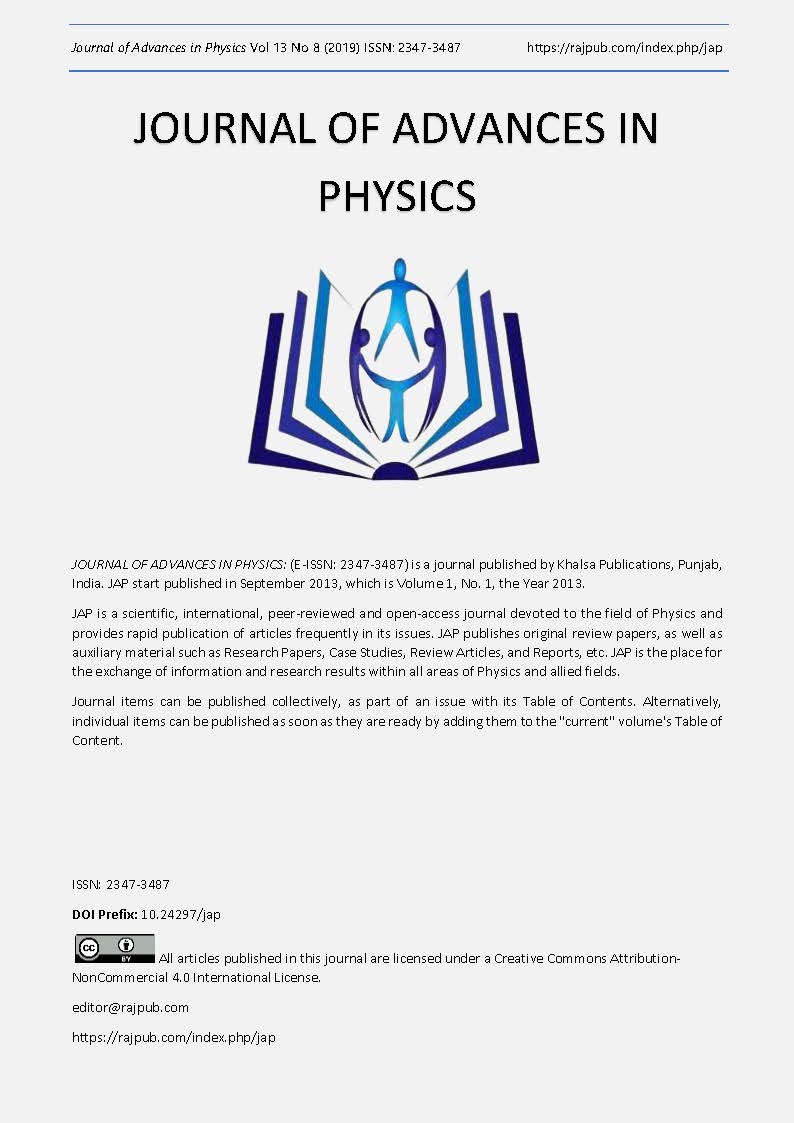Concentration and size distribution of biological particles in school classrooms
DOI:
https://doi.org/10.24297/jap.v13i8.6339Keywords:
bacterial particles, fungal particles, human activity, respirable particles, environmental factors, size distributionAbstract
Fungal and bacterial aerosol particles concentrations are measured in a school classrooms at two different floors using the 6-stage Andersen impactor as a bioaersol sampler. The average bacterial concentration is higher than the average fungal concentration. The concentrations were 957 and 955 cfu/m3 for bacterial particles at first and second floors, respectively while the fungal particles concentrations were 146 and 235 cfu/m3 at first and second floors, respectively. Most of the biological particles were concentrated at the size range of respirable particles (< 5 µm ) that can penetrate into the alveoli and may cause lung diseases. The human activity is a main factor for the production of microbiological particles. Environmental factors play also a role on the fungal growth. Bacterial concentration is almost twice the guide value of WHO while the fungal concentration is underestimation.
Downloads
References
[2] Yassin M, F, Almouqatea S. Assessment of airborne bacteria and fungi in an indoor and outdoor environment. Int J Environ Sci Tech 2010; 7 (3): 535-544.
[3] Anthony K, Y, Law, Chau C, K, Gilbert Y, S, Chan. Characteristics of bioaerosol profile in office buildings in Hong Kong. Build and Environ 2001; 36: 527-541.
[4] Zhou J, Fang W, Cao Q, Yang L, V. W.-C. Chang V, W, C, Nazaroff W, W. Influence of moisturizer and relative humidity on human emissions of fluorescent biological aerosol particles. Indoor Air 2017; 27: 587–598.
[5] Fracchia L, Pietronave S, Rinaldi M, Martinotti M, G. The assessment of airborne bacterial contamination in three compositing plants revealed site related biological hazard and seasonal variations. J Appl Microbiol 2006; 100 (5): 973-984.
[6] Bornehag C, Sundell J, Sigsgaard T. Dampness in buildings and health (DBH): Report from an ongoing epidemiological investigation on the association between indoor environmental factors and health effects among children in Sweden. Indoor Air 2004; 14 (Suppl. S7): 59–66.
[7] Zuraimi M, S, Tham K,W. Indoor air quality and its determinants in tropical child care centers. Atmos Environ 2008; 42: 2225–2239.
[8] Reponen S, A, Grinshpun K, L, Conwell J. Aerodynamic versus physical size of spores: measurement and implication for respiratory deposition. Grana 2004; 40 (3):119-125.
[9] Ahmed M, M. theoretical deposition of fungal aerosol particles in the human respiratoty tract. J Adv Res 2012; 3: 133-138.
[10] Hinds W, C. Aerosol Technology, Properties, Behavior, and Measurement of Airborne Particles. 1999; 2nd edn. Wiley, New York.
[11] Nikaeen M, Hatamzadeh M, Hatamzadeh A, Sahami E, Joodan I. Bioaerosol emissions arising during application of municipal solid waste compost. Aerobiologia 2009; 25:1-6.
[12] Hospodsky D, Yamamoto N, Nazaroff W, W, Miller D, Gorthala S, Peccia J. Characterizing airbornefungal and bacterial concentrations and emission ratesin six occupied children's classrooms. Indoor air 2015; 25: 641-652.
[13] Fox A, Harley W, Feigley C, Salzberg, D, Toole C, Sebastian A, et al. Large particles are responsible for elevated bacterial marker levels in school air upon occupation. J Environ Monit 2005; 7: 450-456.
[14] Chunxiao S, Josephine L, Fang Y. A case study of upper-room UVGI in
densely-occupied elementary classrooms by real-time fluorescent bioaerosol measurements. Int J Environ Res Public Health 2017; 14 (51): 1-11.
[15] Jozef S, P, Kyaw Tha Paw U, Danuta O, L, Agnieszka W, Krzysztof U. Bacterial and fungal aerosol in indoor environment in upper Silesia, Poland. Atmos Environ 2000; 34: 3833-3842.
[16] WHO (World Health Organization). Guidelines for concentration and exposure-response measurements of fine and ultra fine particulate matter for use in epidemiological studies, Geneva, Switzerland 2002.
[17] Lee T, Grinshpun S, A, Martuzevicius D, Adhikari A, Crawford C, M, Reponen T. Culturability and concentration of indoor and outdoor airborne fungi in sex single-family homes. Atmos Environ 2006; 40: 2902-2910.
[18] Mirhoseini S, H, Nikaeen M, Satoh K, Makimura K. Assessment ofairborne particles in indoor environments: Applicability of particle counting for prediction of bioaerosol concentrations. Aerosol and Air Qua res 2016; 16: 1903-1910.
[19] Mentese S, Arisoy M, Rad A, Y, Gullu G. Bacteria and fungi levels in various indoor and outdoor environments in Ankara, Turkey. CLEAN 2009; 37: 487-493.
[20] Pegas P, N, Evtyugina G, Alves C, A, Nunes, T, Cerqueira M, Franchi M, et al. Outdoor/indoor airquality in primary schools in Lisbon: A preliminary study. Quim Nova 2010; 33: 1145-1149.
[21] Chao H, J, Schwartz J, Milton D, K, Burge H, A. Populations and determinants of airborne fungi in large office buildings. Environ Health Perspect 2002; 110: 777-782.
[22] Bonetta S, Mosso S, Sampo S, Carraro E. Assessment of microbiological indoor air quality in an Italian office building equipped with an HVAC. Environ Monit Assess 2010; 161: 473-483.
[23] Hargreaves M, Parappukkaran S, Morawska L, Hitchins J, He C, Gilbert D. A pilot investigation into associations between indoor airborne fungal and non-biological particle concentrations in residential houses in Brisbane, Australia. Sci Total Environ 2003; 312: 89-101.
[24] Hass D, Habib J, Galler H, Buzina W, Schlacher R, Marth E, et al. Assessmentof indoor air in Austrian apartments with and without visible mold growth. Atmos Environ 2007; 41: 5192-5201.
Downloads
Published
How to Cite
Issue
Section
License
 All articles published in Journal of Advances in Linguistics are licensed under a Creative Commons Attribution 4.0 International License.
All articles published in Journal of Advances in Linguistics are licensed under a Creative Commons Attribution 4.0 International License.




